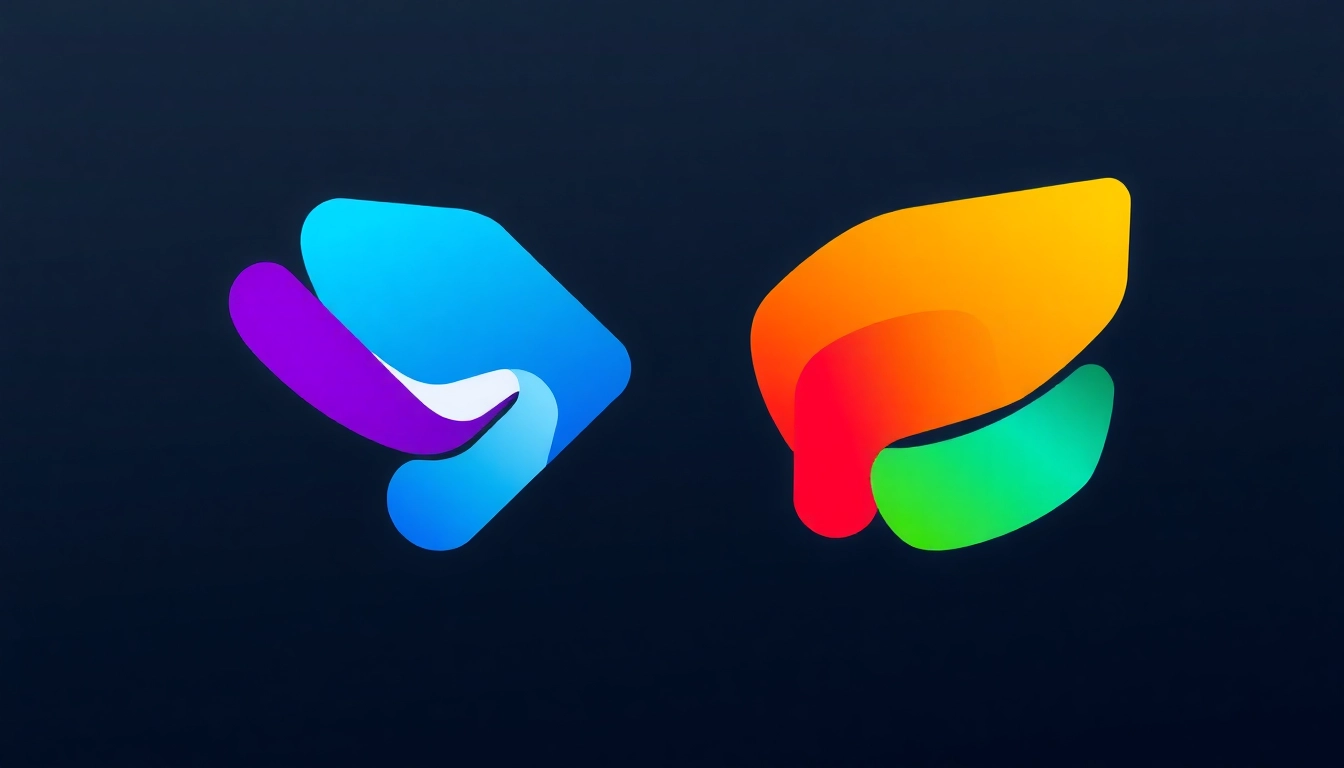Understanding Custom Logo Design
In the competitive landscape of business today, a well-crafted, Custom Logo Design serves as a fundamental element in building brand identity. A logo is not merely a graphical representation; it embodies a company’s values, culture, and ethos. In this comprehensive guide, we will delve into the importance of unique logos, the essential components of effective design, and how to determine the right type of logo for your brand’s persona.
The Importance of a Unique Logo
A unique logo plays a pivotal role in creating a lasting impression. It acts as the visual ambassador of your brand, serving to:
- Establish Brand Recognition: A memorable logo helps customers identify your brand amidst a sea of competitors.
- Convey Brand Values: Your logo communicates what your business stands for, reflecting your mission, vision, and values.
- Differentiate from Competitors: A distinct design helps you stand out in the marketplace, making it easier for customers to remember and choose your brand.
- Enhance Professionalism: An effectively designed logo boosts your credibility, implying that you take your business seriously.
Key Elements of Effective Logo Design
For a logo to resonate with your audience, it needs to incorporate several key elements:
- Memorability: Aim for simplicity while ensuring that your logo is distinctive enough to be easily remembered.
- Versatility: Your logo should look good across different mediums and applications, from business cards to billboards.
- Timelessness: Strive for a design that remains relevant over time, avoiding fleeting trends that may date quickly.
- Appropriateness: The logo should align with your brand persona and resonate with your target audience.
Types of Logos: Which Is Right for You?
Logos can be categorized into several types, each with its strengths:
- Wordmark Logos: These consist primarily of text, emphasizing the company name alone (e.g., Google, Coca-Cola).
- Lettermark Logos: These focus on the initials of a company (e.g., IBM, CNN), making it ideal for businesses with lengthy names.
- Pictorial Marks: Icons or symbols that represent the brand (e.g., Apple’s apple, Twitter’s bird).
- Abstract Logo Marks: These use geometric forms or abstract symbols (e.g., Nike swoosh, Pepsi globe) without direct representation.
- Emblem Logos: Often a badge-like design that includes text within a symbol (e.g., Harley-Davidson, Starbucks).
Steps to Create Your Custom Logo
Define Your Brand Identity
The first step in creating a custom logo is to clearly define your brand identity. Consider these factors:
- Mission Statement: Craft a clear statement that outlines your business purpose and values.
- Target Audience: Understand who your customers are, their preferences, and how your brand fits into their lives.
- Market Position: Analyze your competitors and identify what makes your brand distinct.
By establishing a solid foundation for your brand identity, you can develop a logo that accurately reflects your business’s ethos.
Selecting the Right Design Tools
Once you have a clear brand identity, choosing the right tools to create your logo is essential. Here are some popular options:
- Graphic Design Software: Programs like Adobe Illustrator and CorelDRAW are professional tools that offer extensive features for logo design.
- Online Logo Makers: If you’re on a budget, platforms like Canva and Adobe Express provide user-friendly options with various templates and customization features.
- Hiring a Designer: For businesses seeking a unique touch or a more professional look, hiring a freelance designer or a design agency might be the best route.
Design and Feedback Process
The design stage involves sketching ideas, drafting designs, and iterating based on feedback. Here’s how to streamline this process:
- Sketch Ideas: Take your time to sketch various logo concepts, even if you plan to digitize them later.
- Gather Feedback: Share initial designs with trusted colleagues or target audience members and gather insights on perceptions.
- Refine Your Design: Utilize the feedback to enhance or pivot your design, ensuring it aligns with your brand’s mission.
Common Challenges in Logo Design
Avoiding Over-Complexity
One common pitfall in logo design is over-complicating the design. A cluttered logo can be confusing and diminish brand recognition. To avoid this:
- Simplify Elements: Stick to two or three colors and a maximum of two fonts to maintain clarity.
- Focus on Core Message: Ensure that every element in your design serves a purpose in communicating your brand’s message.
Knowing When to Seek Professional Help
Understanding when to enlist a professional can save time and yield better results. Signs that it’s time to consider professional assistance include:
- Lack of Design Experience: If you feel unsure about your design abilities, consulting a professional designer can be beneficial.
- Incorporating Multiple Perspectives: Designers bring fresh insights and a wealth of experience that can enhance your logo’s effectiveness.
Managing Client Expectations
For those working with clients on logo design, clear communication about expectations is vital. Be transparent about timelines, processes, and feedback loops to maintain a productive relationship.
Best Practices for Logo Design
Timeless vs. Trendy Logos
When creating a logo, consider the balance between timelessness and trendiness. While incorporating current design trends can capture attention, they can also risk becoming outdated.
- Seek Balance: Aim for a logo that feels current yet has elements that are timeless enough to remain relevant for years.
- Test Different Designs: Regularly evaluate new trends while ensuring your core elements remain unchanged so that your logo evolves organically.
Utilizing Color Psychology in Logo Design
Color conveys emotions and brand attributes. Understanding color psychology is crucial:
- Red: Symbolizes passion and energy.
- Blue: Conveys professionalism and trust.
- Green: Often associated with health and tranquility.
- Yellow: Evokes feelings of happiness and optimism.
- Black: Represents sophistication and elegance.
Testing Your Logo Across Different Mediums
Before finalizing your logo, ensure it performs well across various platforms—digital, print, social media, and merchandise.
- Size Variability: Test the logo’s clarity and recognition at both large and small sizes.
- Color Variants: Ensure that the logo is effective both in color and monochrome.
Examples of Successful Custom Logo Designs
Case Studies of Iconic Logos
Analyzing successful logos can provide valuable insights. Here are a few case studies:
- Apple: The simple, iconic apple logo with a bite taken out stands for innovation and quality.
- Nike: The swoosh is a powerful representation of speed and movement with minimal design.
- Coca-Cola: Its dynamic script typeface has conveyed happiness and refreshment for decades.
What We Can Learn from Failed Logos
Failure can be a great teacher in logo design. Consider the following lessons:
- Gap’s Logo Redesign: The 2010 logo redesign faced backlash for lack of connection to the brand’s history.
- Pepsi’s Logo Experiment: Their attempt to modernize the logo lost essential elements that made it recognizable.
Incorporating Feedback for Continuous Improvement
One key takeaway from both successes and failures in logo design is the importance of feedback. Regularly seek client and customer insights to adapt and enhance your logo’s effectiveness.



